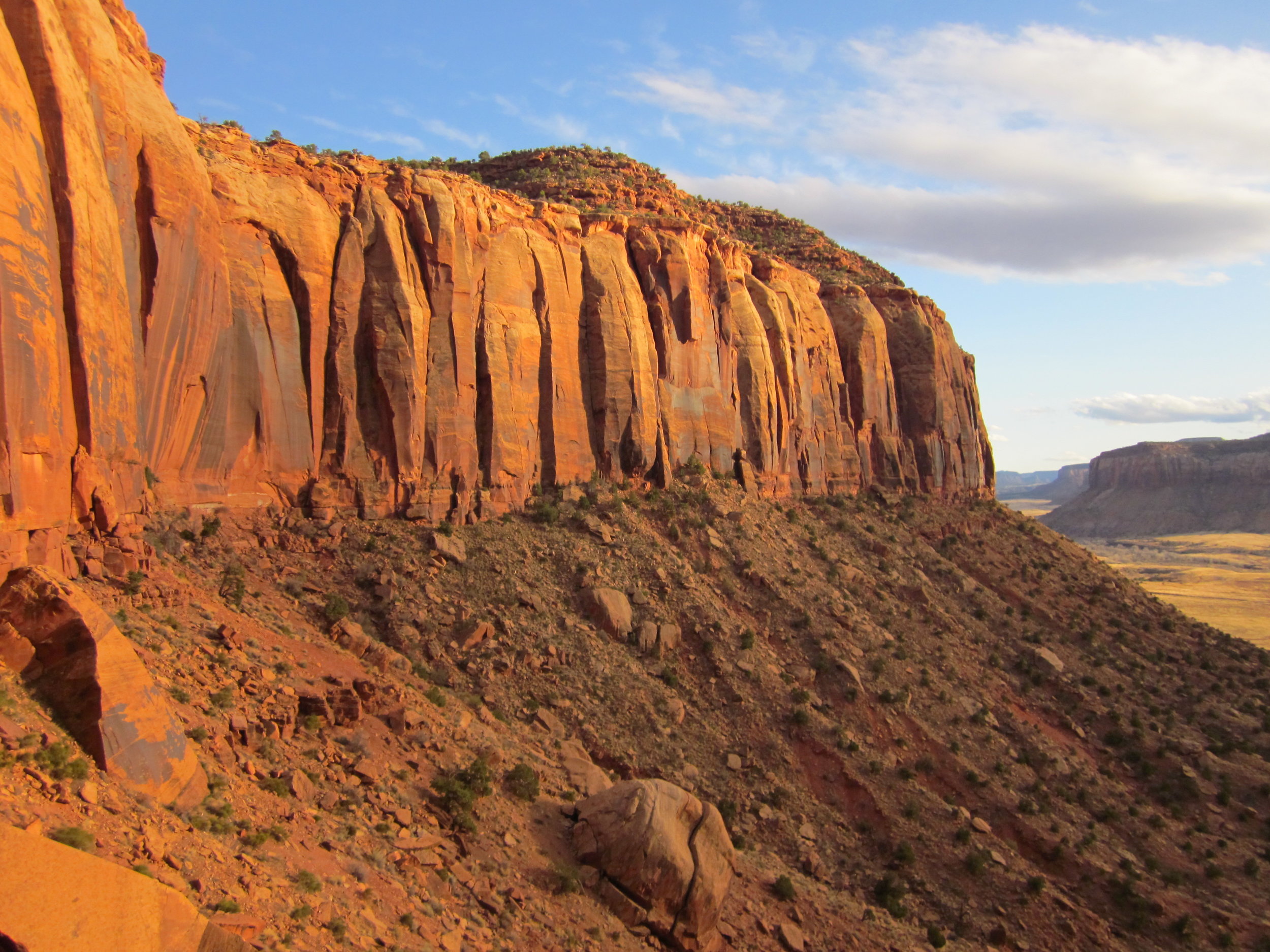Doodoos and Don’ts: Pooping in the Desert
Doodoos and Don’ts: Pooping in the Desert
By: Adam Tobey
Alright, let’s get real for a minute. Everyone poops, even, and perhaps especially, climbers. As desert crack season quickly arrives, the first thing on your mind might be how you’re going to acquire enough #2 Camalots to climb that splitter handcrack you’ve been salivating over for who knows how long. What you're probably not thinking of is what you’re going to do with the bacteria-infested, smelly, gross stuff, of which, if things are going well, we produce over a pound a day: poop.
So after you’re done calling everyone you know in a 300+ mile radius to get your desert rack together, make a plan. A poop plan. Because no one wants to be on the way to the crag and see your (or your dog’s) waste on the side of the trail.
But before we go on, we need to dispel a few falsehoods. Just because wildlife discards waste in the open doesn’t mean humans and their pets can do the same. People and their crag animals stick to the trails (or at least they should), but wildlife doesn’t. Thus, wildlife feces get diluted throughout a wilderness area, while human and dog dung piles up in the areas where people and dogs go. Plus our waste is filthy. Full of over 100 different protozoans, bacterias, and viruses, improper disposal of waste isn’t only bad for wildlife who might think it’s some gourmet desert dessert, but it and our urine are also bad for water sources that both wildlife and humans use. And your dog? Tons of zoonotic diseases (read: bad things that can make you sick or die) are in their waste as well. Try not to think about that next time you let your butt-licking best friend wake you up with sloppy kisses.
Number two (wink wink): Lots of people are courteous enough to not just leave a surface dump on the side of the trail or crag and will at least attempt to bury their waste via a 6-8 inch deep cathole. But burying doesn’t solve the problem. In arid alpine or desert environments, where you’re hoping to get some sick sends to brag about to people back in the real world who don’t care, fecal matter takes much longer to decompose. Studies have shown that even after a full calendar year many of these nasty organisms still exist in these old crusty waste cakes (check out this study for more information). While all waste decomposes at some point, leaving yours and your pet’s out in the open poses potential health hazards to both wildlife and domesticated life, especially if you’re taking care of business at campsites close to water sources. Neither you nor wildlife wants to drink poopy, pissy water.
Now that those are out of the way, it’s time for a bit of encouraging education instead of the shame and guilt you’re probably feeling because of your past improper poop techniques. Number three on the The Leave No Trace Seven Principles list is “Dispose of Waste Properly” (© 1999 by the Leave No Trace Center for Outdoor Ethics: www.LNT.org). The best option? Relieve yourself in vault toilets before you head out to the crag. This way you won’t even have to worry about it. But emergencies happen at inopportune times, and we can’t leave our mess out there in the open. We’re talking pack it out. It’s become the law of the land down at places like Indian Creek to pack out your waste. So build yourself a reusable poop tube (you can also use a hearty Tupperware container…just make sure it isn’t sealed too tight or it could explode!) or snag a few WAG bags (Cleanwaste and Restop bags are popular, and you can even acquire a whole latrine set-up) after your sunrise yoga session and before you get to the base of your project. If you opt for the WAG bag option, magical little crystals in these bags contain the nasties in our disease-infested dump, so you can just toss that sucker in the garbage can.
You can even haul a 5-gallon bucket (with a screw on lid) with you and use the WAG bag as a liner and make a real desert sitter. If you use a poop tube or other home-made doodoo disposal device, fill that thing up with some cat litter or sawdust to try and reduce the smell. As of the date of this article, the Maverick gas station just south of downtown Moab has one of these handy disposal spots you can use for free as you mosey on back into town for post-climbing brews to dump the tube sans WAG bag. If you don’t have WAG bags, BEWARE: kitty litter and sawdust don’t kill all the pathogens the same way those fancy WAG bags you can buy at REI do. But fear not. You can complete your homemade poo bucket ensemble by purchasing the magic little poo crystals to make tossing your poo bag in the dumpster safe - it’s called “Poo Powder” and you can purchase it at Gearheads in Moab. Keep in mind these rules apply to your toilet paper too. No one wants to see Charmin flowers blooming at the crag, so pack them out and dispose of them as you would your feces.
For your crag dog? Best practice is to dispose of their waste the same way you dispose of yours. However, it’s totally fine to bring some plastic bags (preferably biodegradable, obviously), carry out their waste, and throw it in the garbage can on your way back to your van.
This probably goes without saying, but just to be clear, these practices don’t just apply to the desert environment in Southern Utah, but all desert environments. Many of these practices are transferable to alpine environments and your local crags as well. Make sure to check with land management agencies in the areas you are planning to climb any time during the year to make sure you are following best practices. I mean come on, it only takes 5 minutes to look up these standards, and you’ll be making a huge difference in the access and enjoyability of our climbing areas.
So do your doody dutifully. Build a poop tube. Bring a WAG bag. Sure, it might be gross, but it’s all part of being human. And part of being a human being means taking responsibility for our actions, perhaps especially our actions that (hopefully) happen every day.
Adam Tobey is a current member of the SLCA, the Utah State Advocate for the Leave No Trace Center for Outdoor Ethics, a climbing instructor at a local gym, the founder and owner of a youth outdoor education company, a dog dad, and works with young people in the Presbyterian Church (USA) throughout Utah. He sleeps when he can.
Interested in getting involved with Leave No Trace? Contact Adam at utadvocate@lnt.org to learn more!
Photo by Jon Tiedemann


